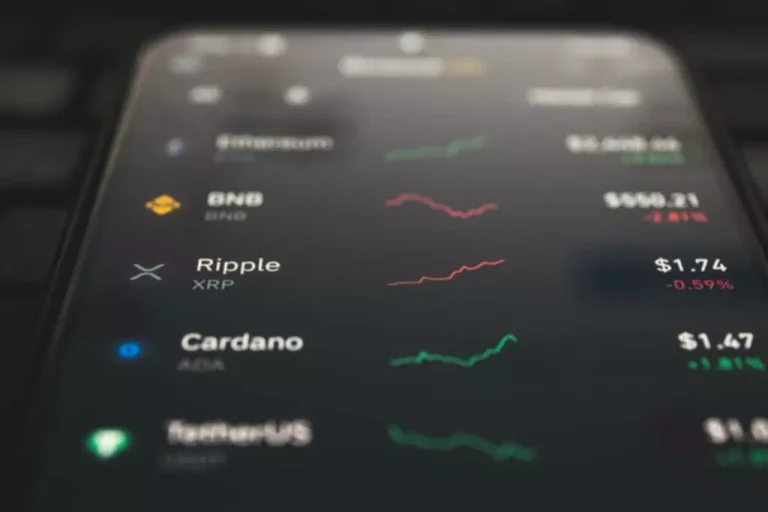Content
Its TVL has increased by 4% in the last seven days, despite the recent market crash, suggesting a healthy ecosystem. Indeed, if we were to look at our earlier example with the drive-on-demand services and traditional taxis, the differences between the two are, admittedly, pretty negligible. Eventually, you would still end up driving to your friend’s house – so, the end goal is the same. That’s fine for a lot of people – at the same time, though, there are others who are difference between cex and dex less keen on handing over their names and payment details to a huge company. This group of people prefers to catch a taxi, the old-school way – find one in the nearest parking lot, or call up a taxi company and ask it to send a driver to their location.
Decentralize exchanges pros and cons

Bybit surged to second place, increasing its market share to 12.6% in June. Newcomers Thruster and Aerodrome made significant gains, with Thruster’s volume rising 464.4% to $6 billion and Aerodrome growing 297.4% to $5.9 billion. Ultimately, the choice between a CEX vs a DEX depends on your individual priorities as a trader. Cryptocurrency wallet By understanding the key differences between these platforms and keeping an eye on future trends, you can make informed decisions about where and how to trade in the dynamic world of cryptocurrency.
Underrated Cryptos Ready for Explosive Growth in the 2025 Bull Market
Leading examples include Uniswap, 1Inch, Raydium (Solana), Sushiswap, PancakeSwap (BNB Chain) and Osmosis (Cosmos). All these DEXs can be accessed in the CoolWallet App by using native features such as WalletConnect. When deciding between a centralized or decentralized exchange, it’s essential to consider your specific trading requirements and preferences. Some factors to take into account include the level of security you desire, your trading volume and frequency, your need for anonymity and privacy, and the importance of user experience and ease of use. CEXs offer easy-to-use trading services and numerous advanced features, like margin, features and OTC trading. At the moment, users seem to prefer the centralized world of crypto exchanges due https://www.xcritical.com/ to its user-friendly stance and continuous access to support.
AlphaPoint vs. HollaEx: A Comprehensive Comparison of White-Label Crypto Exchange Solutions
According to a KPMG 2021 report, exchanges represent the most valuable businesses in the crypto world. CEXs are still far more common than decentralized exchanges (DEXs) and account for around 95% of all exchange crypto trading. Binance, the largest crypto exchange in the world, processes a $14 billion spot trading volume per 24 hours, in comparison to Uniswap, the best known DEX, with a 24h trading volume of $246 million. Weighing the advantages and disadvantages of both CEX and DEX platforms is crucial in making an informed decision.
The user interfaces of many DEX platforms can be more challenging to navigate, especially for less tech-savvy users. Moreover, customer support and educational resources may be limited or nonexistent on some decentralized exchanges, which could further hinder the user experience. By eliminating the need for a central authority, decentralized exchanges aim to provide a more secure and transparent trading environment. Users maintain control over their assets and private keys, reducing the risk of hacks and security breaches. Additionally, DEX platforms often do not require users to undergo KYC or AML procedures, offering greater anonymity and privacy while trading. Centralized exchanges typically boast higher trading volumes and liquidity compared to decentralized exchanges.

The organization controlling order execution acts as the middleman between the traders who are buying a cryptocurrency and those who are selling it. Some of the best known CEXs are Binance, Kraken and Coinbase and they are more popular overall than DEXs, with larger userbases and far greater trading volume. As of January 7, the DEX/CEX volume ratio reached an all-time high, with over 20% of all crypto trading happening on decentralized exchanges. This data is from IntoTheBlock, shared on X by Hayden Adams, inventor of the Uniswap protocol, a leading decentralized exchange. On the flip side, decentralized exchanges eliminate this issue, altogether. You are the only one responsible for what happens to your cryptos – even if the underlying exchange gets hacked, since you aren’t storing your cryptocurrencies on it, your funds would technically be safe.
Discover the key differences between fiat and commodity money, their advantages, limitations, and how they are used in global economies. For example, back in 2021, CEXs saw over $14 trillion in trading volume while DEXs only topped $84.98 billion in the same period. Although DEXs are growing in popularity, one can’t deny that CEXs still dominate them in terms of the trading volume. CEXs act as on-ramps and off-ramps, meaning users can easily convert fiat into crypto and vice versa. Perhaps the most basic way to engage in Web3 is to buy or exchange crypto tokens. The DEX growth was attributed to meme coin surges and numerous airdrops, while CEX performance aligned with overall crypto market trends.
In contrast, decentralized exchanges allow users to trade without revealing personal information, ensuring greater anonymity and privacy. Users can trade cryptocurrencies without undergoing KYC or AML procedures, mitigating the risk of data breaches or misuse of their information. This feature is particularly attractive to users who prioritize privacy and want to maintain their anonymity while trading digital assets.
- With centralized exchanges (CEXs) under siege from both regulators and bad actors and DEXs making huge innovations, there is a growing debate whether smart investors should just give up CEX in favor of DEXs.
- There are two types of crypto exchanges, centralized (CEX) and decentralized (DEX).
- Users can choose between a long list of trading pairs, because available coins and tokens do not need to go through examination.
- This grants you complete ownership, but it also means you are solely responsible for protecting your assets.
- This data is from IntoTheBlock, shared on X by Hayden Adams, inventor of the Uniswap protocol, a leading decentralized exchange.
- They are often required to comply with local and international laws, such as anti-money laundering (AML) and counter-terrorism financing (CTF) regulations, as well as consumer protection and data privacy laws.
Centralized exchanges (CEX) are digital asset trading platforms that operate under the control of a central authority or company. These exchanges facilitate the buying, selling, and trading of cryptocurrencies using an order book system and often support various trading pairs with fiat currencies. These new utilities will not only strengthen the value of RBIS, our native token and offer their own revenue channels but will provide all the benefits of decentralization, with none of the drawbacks. A decentralized exchange offers total anonymity, since no identification is required, which increases the accessibility to financial services.
Decentralized exchanges come in different forms, i.e. order book DEXs, DEX aggregators, and – the most popular one – Automated Market Maker. Currently, the top 5 CoinMarketCap DEXs are Uniswap, PancakeSwap, DODO, Kine Protocol, and dYdX. To add to all of that, comparing DEXs VS CEXs, you will also soon notice that the latter are a bit primitive, when compared to their centralized counterparts.
In the absence of an order book to assess supply and demand to update assets’ prices, AMMs use a mathematical formula. Tristan also highlights the developments related to DEX for perpetual contracts trading, mentioning the launch of a layer-2 blockchain on Solana dedicated to Zeta Markets, called Zeta X. Discover how these unique auctions are altering the digital art landscape and offering new investment opportunities. For DEX volume, we are choosing the top DEX from each chain in Ethereum, Polygon, BSC, Optimism, and Arbitrum for analysis. Interestingly, we can see a spike similar to CEX volume which is around 6 Nov as the case of FTX began. Besides that, the volume on DEX is behaving quite commonly without any major changes.
To get started, simply buy cryptocurrency via MoonPay using your credit card or any other preferred payment method. Given that a DEX conducts transactions on-chain, miners must validate these transactions before adding them to the block. This makes them slower than CEXs like Binance, whose matching engine is capable of sustaining more than 1,400,000 orders per second. In this article, we review the major differences between CEXs and DEXs so you can make an informed decision about where to make your next crypto trade. Only four of the top 10 CEXs saw volume increases, with Gate leading at 51.1% growth ($85.2 billion), followed by Bitget at 15.4% ($24.7 billion), and HTX at 13.7% ($25.5 billion).
Since our interest-generating wallet is centralized, we are able to offer the highest levels of security. As an EU authorized and registered financial services provider we comply with the strictest regulatory protocols including KYC and AML requirements. With the AMM model, a smart contract pools the liquidity from users and prices the assets within the pool using algorithms. The liquidity provider then earns a fee for every time a trader executes a swap in the pool. In cases where liquidity in the pool is low and a trader wants to execute a big swap they run the risk of slippage, meaning the cost for purchasing will exceed the market price.


ارسال یک پاسخ